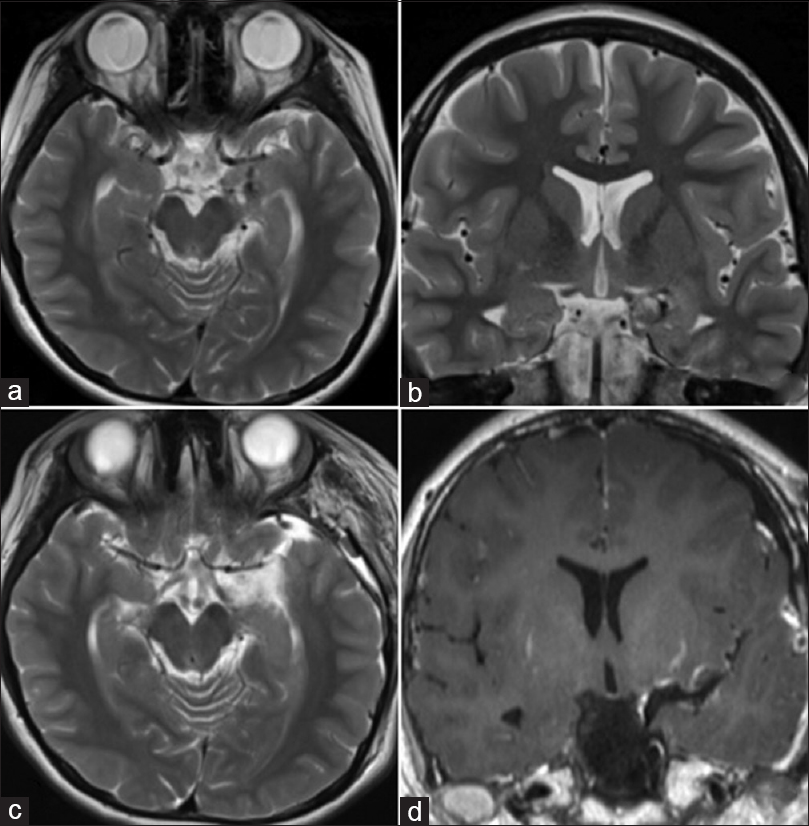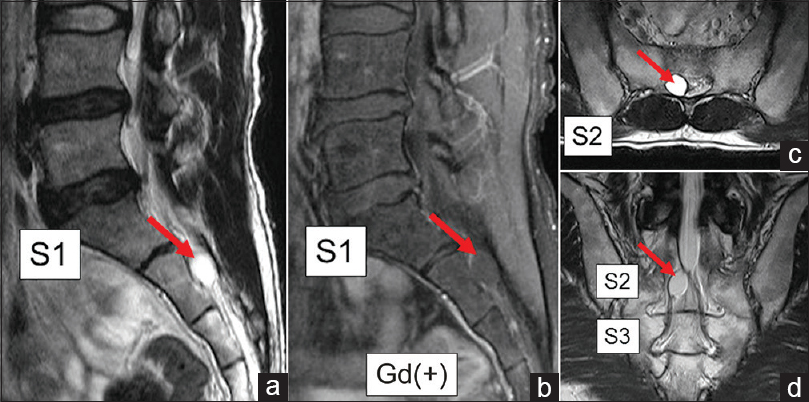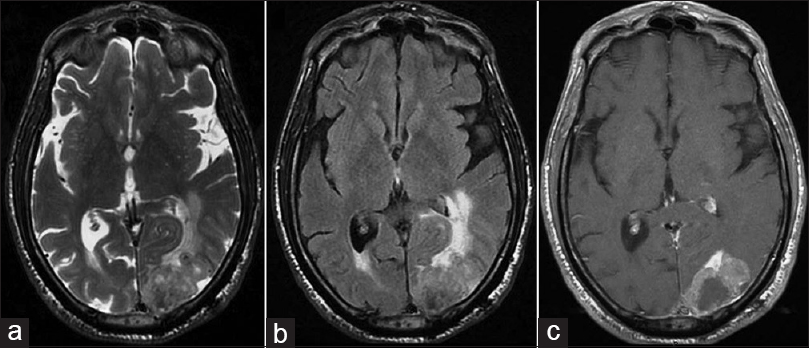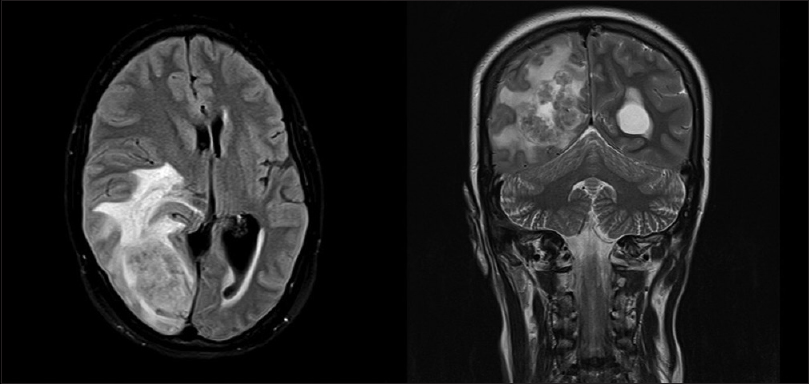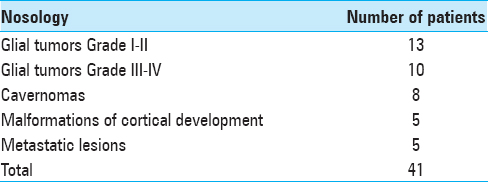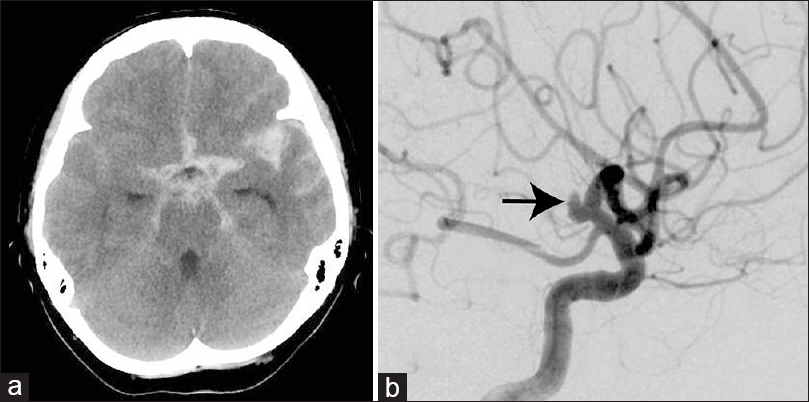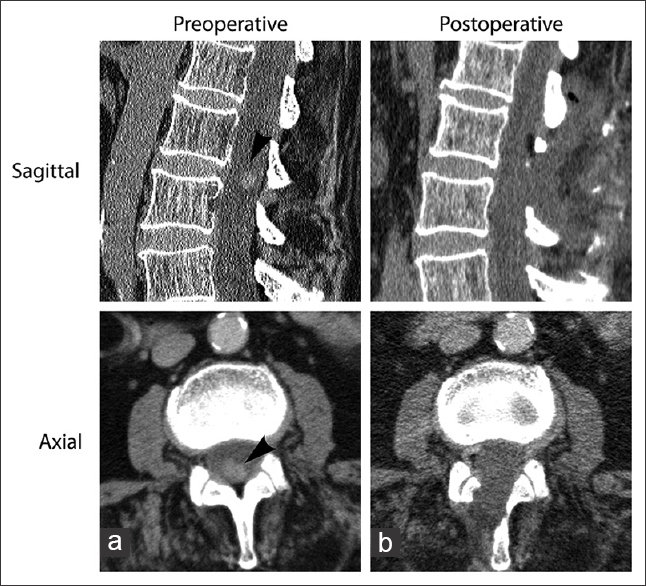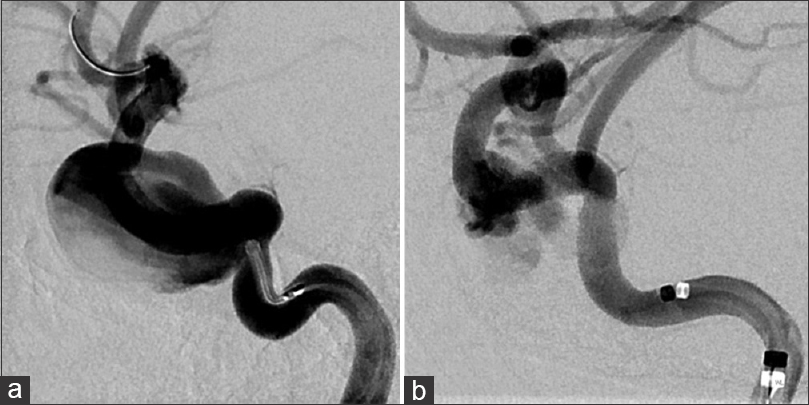One burr-hole craniotomy: Modified presigmoid approach in Helsinki Neurosurgery
Date of publication: 10-Sep-2018
Background:In this video abstract, we present a one burr-hole craniotomy for a modified presigmoid approach developed in Helsinki Neurosurgery to access the space extended to both middle and posterior fossa. Thus, indications for this approach are lesions that extend to both middle and posterior fossa, petroclival tumors, basilar tip aneurysms located extremely low below the posterior clinoid process, trunk basilar aneurysms, and bypass procedures from the P2 segment of the posterior cerebral artery. The procedure is composed by three stages: a temporal and presigmoid craniotomy, a partial petromastoidectomy, and the dura opening with section of the superior petrosal sinus (SPS) and the tentorium. Even though some risks related to the opening of the mastoid cells or cut of the SPS may exist, benefits of this optimized craniotomy are higher compared with the complications.
Seizure freedom from temporal lobe epilepsy with mesial temporal lobe tumor by tumor removal alone without hippocampectomy despite remaining abnormal discharges on intraoperative electrocorticography: Report of two pediatric cases and reconsideration of the surgical strategy
Date of publication: 10-Sep-2018
Background:In the surgical treatment of temporal lobe epilepsy with mesial temporal lobe tumor, whether to remove the hippocampus aiming for a better seizure outcome in addition to removing the tumor is a dilemma. Two pediatric cases treated successfully with tumor removal alone are presented.
Resection and imbrication of symptomatic sacral Tarlov cysts: A case report and review of the literature
Date of publication: 04-Sep-2018
Background:Symptomatic Tarlov cysts are extremely rare, and there is no consensus regarding their optimal surgical management. Here, we encountered a patient with a symptomatic sacral Tarlov cyst and reviewed the appropriate literature.
Prognostic factors in brain metastases from laryngeal squamous cell carcinoma: Case report and review
Date of publication: 04-Sep-2018
Background:Brain metastases from laryngeal squamous cell carcinoma (SCC) are rare, and there are no standardized treatments. Here we reported on a case of brain metastasis from laryngeal SCC and performed a literature review on these cases. Moreover, by plotting Kaplan–Meier curves, we carried out a survival analysis to provide an estimation of overall survival (OS) and to find possible prognostic factors.
Rare case of meningeal tuberculoma mimicking meningioma in term pregnancy and its management
Date of publication: 03-Sep-2018
Awake craniotomy without sedation in treatment of patients with lesional epilepsy
Date of publication: 03-Sep-2018
Background:The use of awake craniotomy for surgical treatment of epilepsy was applied in surgery of convexital tumors, arteriovenous malformations, some superficial aneurysms, and stereotactic neurosurgery. The aim of this study was to show the advantages of awake craniotomy without sedation, accompanied by intraoperative neurophysiological monitoring in patients with symptomatic epilepsy.
What happened to “Patient first” and “Do no harm” medical principles?
Date of publication: 29-Aug-2018
Unexpected intraabdominal hemorrhage due to segmental arterial mediolysis following subarachnoid hemorrhage: A case of ruptured intracranial and intraabdominal aneurysms
Date of publication: 29-Aug-2018
Background:Segmental arterial mediolysis (SAM) is an uncommon vascular disease, which manifests as catastrophic intraabdominal hemorrhage caused by rupture of visceral dissecting aneurysms in most cases. The etiology of SAM is still unclear, but SAM may be a vasospastic disorder and the responsible pressor agent is norepinephrine. Recently, abdominal SAM coexisting with intracranial dissecting aneurysms has been reported, but the relationship between intraabdominal and intracranial aneurysms in SAM remains unclear, as no cases of concomitant abdominal SAM and ruptured intracranial saccular aneurysm have been reported.
Cavernoma of the cauda equina
Date of publication: 28-Aug-2018
Background:Cavernomas are benign malformations of the vasculature. In the central nervous system, they are mostly located supratentorially. However, in adults, cavernomas also comprise about 3% of all subdural spinal cord tumors. Notably, cavernomas of the cauda equina are extremely rare, with only 23 cases reported in the literature. Here, we report the 24th case involving a 77-year-old male.
Progressive edematous lesions in subacute phase after neuroendovascular therapy
Date of publication: 28-Aug-2018
Background:The appearance of edematous lesions in the subacute phase is a rare complication following neuroendovascular therapy. Effective management of these lesions remains unclear. In this report, a case with progressive edematous lesions in the subacute phase after neuroendovascular therapy was described, and the clinical features and therapeutic strategies were discussed.


